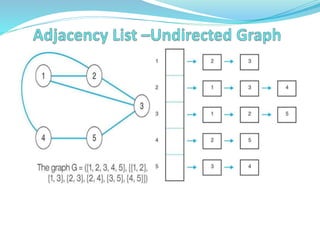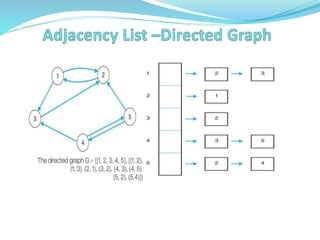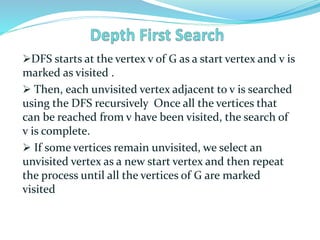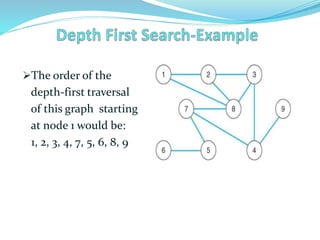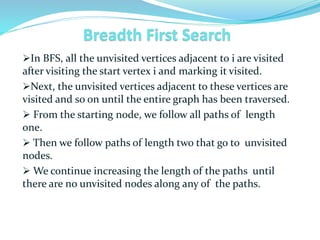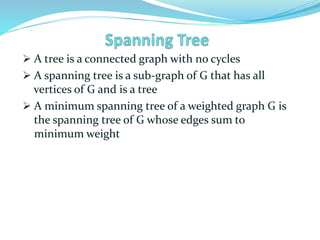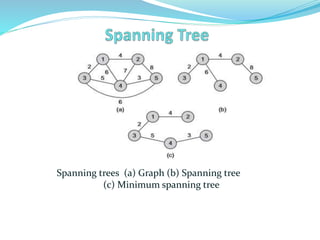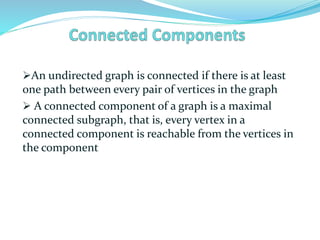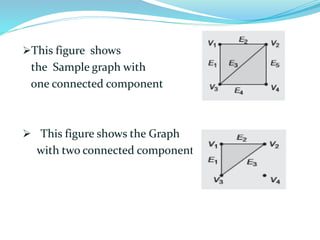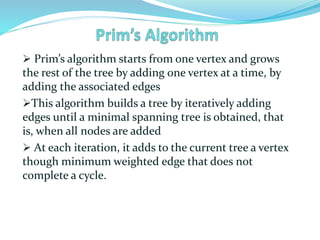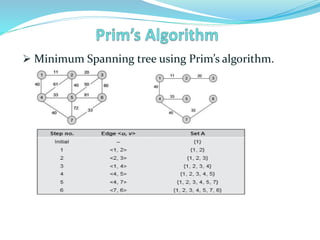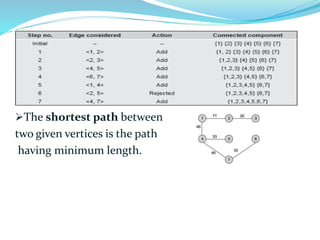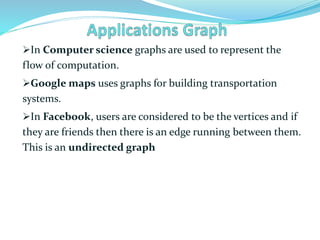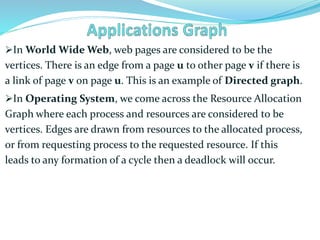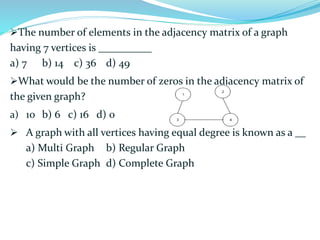The document defines graphs and discusses their properties and applications. It covers topics like directed vs undirected graphs, representations using adjacency matrices and lists, graph traversals using depth-first and breadth-first search, minimum spanning trees, and applications of graphs in areas like social networks and the world wide web.
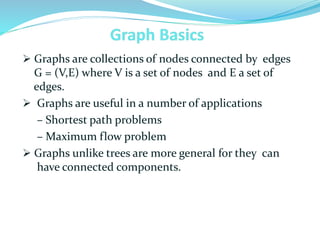
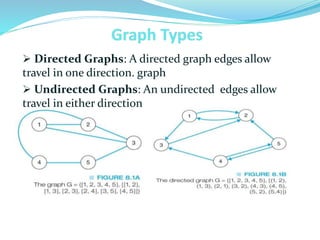
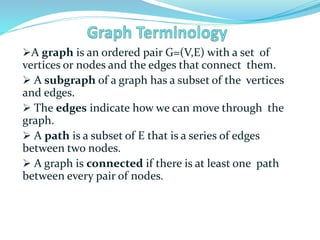
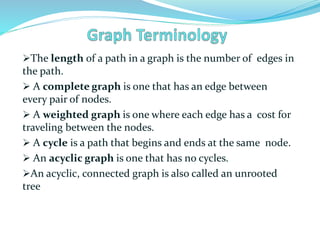
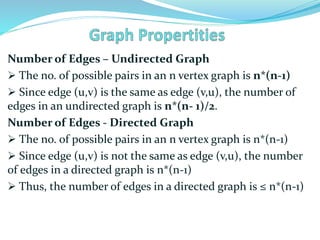

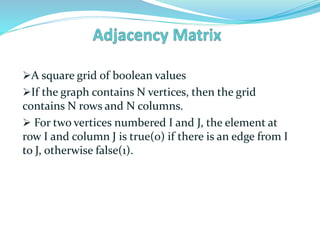
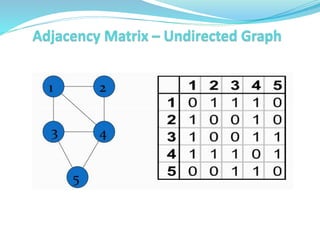
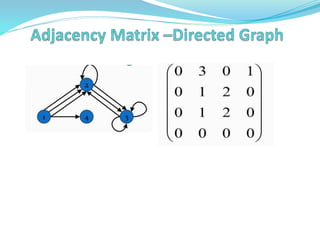
![In an adjacency list, the n rows of the adjacency list are
represented as n-linked lists, one list per vertex of the graph
A graph of n nodes is represented by a one dimensional array L
of linked lists, where
● L[i] is the linked list containing all the nodes adjacent from
node i.
● The nodes in the list L[i] are in no particular order.
For a weighted graph, this list would also include the weight for
each edge.](https://image.slidesharecdn.com/non-lineardatastructure-graphs-221222095549-fc93d908/85/NON-LINEAR-DATA-STRUCTURE-Graphs-pptx-10-320.jpg)
